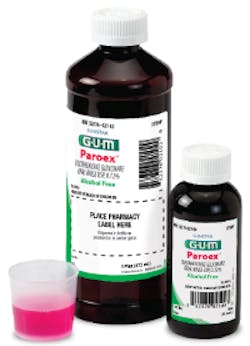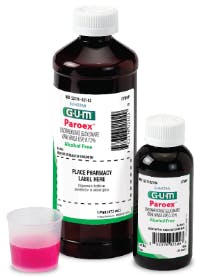Sunstar product solutions: Home care tools enable patient compliance
By Jodie Heimbach, RDH, BS
The Centers for Disease Control and Prevention (CDC) published a report (1) providing significant data on the number of occurrences of periodontal disease in the United States. The report stated 47.2% of adults aged 30 years and older had some form of periodontal disease. In addition, the data showed that 70% of adults 65 years and older had periodontal disease. Not only does the disease progress with age, there was also evidence demonstrating periodontal disease is more common in men than women, those living in poverty, those with less than a high school education and those who smoke.
As a dental hygienist, it is our responsibility to customize an oral care plan for each patient diagnosed with gingivitis or periodontal disease. When you begin to design the proposal for care, many factors must be taken into consideration. Factors may include the severity of the disease, the patient’s level of understanding of the disease, his/her ability to comply with the proposed treatment plan and his/her health history, complications, and co-morbidities.
Prevention and Treatment
Treatment may requireinitial periodontal therapy including debridement of the root surfaces, oral antibiotics or subgingival irrigation, locally applied antibiotics and/or surgery. After completion of clinical care, there are several options for patient-applied home care.
- Oral rinses—When developing a treatment plan, a dental professional will need to consider what tools they have in their armamentarium and what they can recommend. What products would be most effective and beneficial for these periodontal cases? Should you consider rinses, and, if so, can the patient tolerate the use of any rinse with alcohol?
Alcohol in oral rinses may cause a burning sensation, and it may be a barrier to patient compliance. Some patients may need to avoid alcohol and may decide to not use the rinse recommended or even decline to have their prescription filled.
- Interproximal cleaning options—Taking the time to demonstrate the use of oral care aids while the patient is still in the chair is very important. Think about the chances of the patient going to the store and purchasing a home care product that you are recommending. Demonstrating and dispensing the product before the patient leaves the chair helps guide the patient, teaching them to take care of their oral health and bringing value to you as a dental professional.
With brushing instructions, not only do patients need to see in their mouths where to place the bristles of the brush, they also need to feel the bristles clean along the gingival margin and subgingivally. This will be the most important part of home care compliance.
How about interproximal cleaning? For those with dexterity challenges, the long handle GUM Proxabrush might be the best option. Keeping in mind that not all embrasure spaces in the mouth are the same size; there are four different refill sizes to address this issue. Sizes range from tight to extra wide to accommodate interproximal plaque removal. The longer handle provides a soft rubber grip, the nylon bristles are coated with an antibacterial agent, and the wire stem is coated to avoid scratching implants and giving minor galvanic shocks from metal restorations.
Some patients want a disposable aid. GUM Soft-Picks are innovative, comfortable, and easy-to-use between-teeth cleaners. They have 76 rubber bristles that stimulate the gums while removing plaque. They are available in three designs: the original for smaller embrasures, the wider spaces for larger embrasures, and the Soft-Pick Advanced, which are curved and have an ergonomic handle, making it effective for the posterior areas. Clinical testing showed Soft-Picks remove 26% of interproximal plaque and reduces interdental bleeding. Soft-Picks have also been shown to reduce gingivitis by 33% over six weeks.(3)
Jodie Heimbach, RDH, BS is a graduate of Fones School of Dental Hygiene and O’Hehir University. She has practiced in general, periodontal and pediatric dental practices. She is the past president of the New Jersey Dental Hygienists’ Association. She is a recipient of the Sunstar/RDH Award of Distinction, and is the New Jersey District Sales Manager for Sunstar.
References
- Eke PI, Thornton-Evans G, Dye BA, Genco R. Advances in Surveillance of Periodontitis: The Centers for Disease Control and Prevention Periodontal Disease Surveillance Project. J Periodontol 11 February 2012: 1–9.
- For important safety information about GUM® Paroex® please see http://us-professional.gumbrand.com/gumr-chlorhexidine-gluconate-oral-rinse-4.htmlhttp:/us-professional.gumbrand.com/gumr-chlorhexidine-gluconate-oral-rinse-4.html
- Yost KG, Mallatt ME, Liebman J: interproximal gingivitis and plaque reduction by rour interdental products. J Clin Dent 2006; 17; 79-83.




